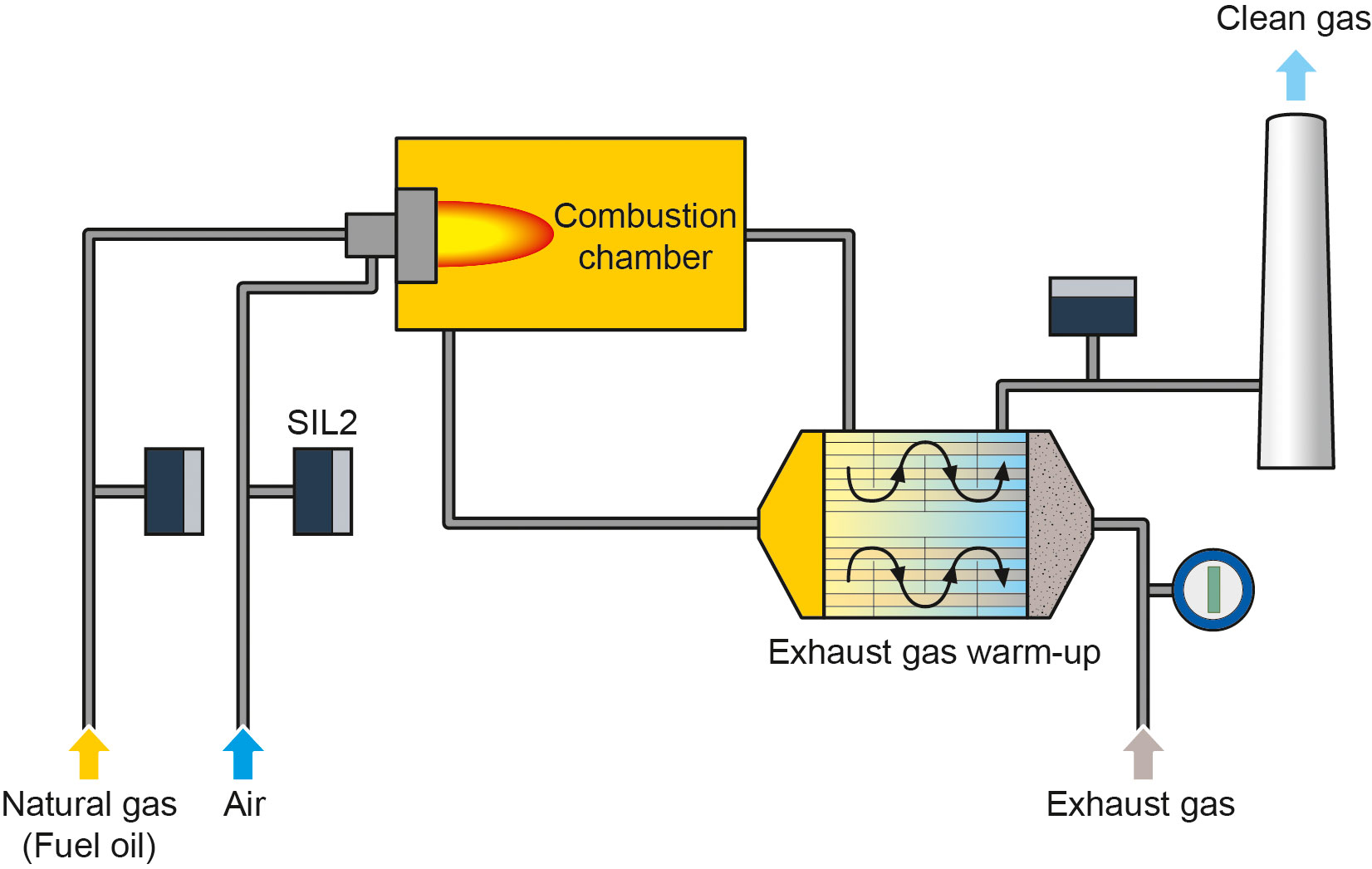Process data
Measuring task:
Measuring flow rate of inflowing, solvent-containing exhaust air to manage combustion processes in a combustion plant
Measuring points:
Supply point of exhaust air, Supply point of natural gas, Supply of air in TNV (RTO), exhaust air after the TNV
Measuring range:
Typically 5 … 15 m/s
process pressure:
Slight underpressure, overpressure
process environment:
Typically ATEX zone 2
Sometimes SIL 2 required
Application
Thermal post-combustion is an exhaust air and exhaust gas cleaning process. Air hygienically it’s an optimal process because exhaust air/exhaust gases except for sulfur, halogen or other thermally non-decomposable foreign substances are turned into the non-hazardous substances water (H2O) or carbon dioxide (CO2). The process is perfectly suited for VOC laden gases starting at 1g/Nm³ at a VOC precipitator efficiency over 99.8 %. That way required limit values can be adhered to.
Fast start and stop allow the use under highly fluctuating process conditions.
Special flow sensors can measure inflow of exhaus gases to the post-combustion plant and therefore regulate the process, guaranteeing optimal combustion.
Your advantage
Robust
Our vortex sensor has no moving parts. It is available in stainless steel, titanium or Hastelloy. Optimal use for solvent-containing exhaust air (VOC) in the RTO process.
Economically
Longevity and minimal maintenance effort result in low operating expences in the combustion plant.
Tried and tested
Höntzsch vortex sensors are used in many, partly quite challenging applications and deliver reliable measuring results.
Recommended products
Vortex probe VA40…ZG7
Standard compact unit, variable insertion depth
Vortex Probe VA40 ... ZG8 Ex-d / ATEX
Thermal Probe TA10
Thermal Measuring Tube TA Di




